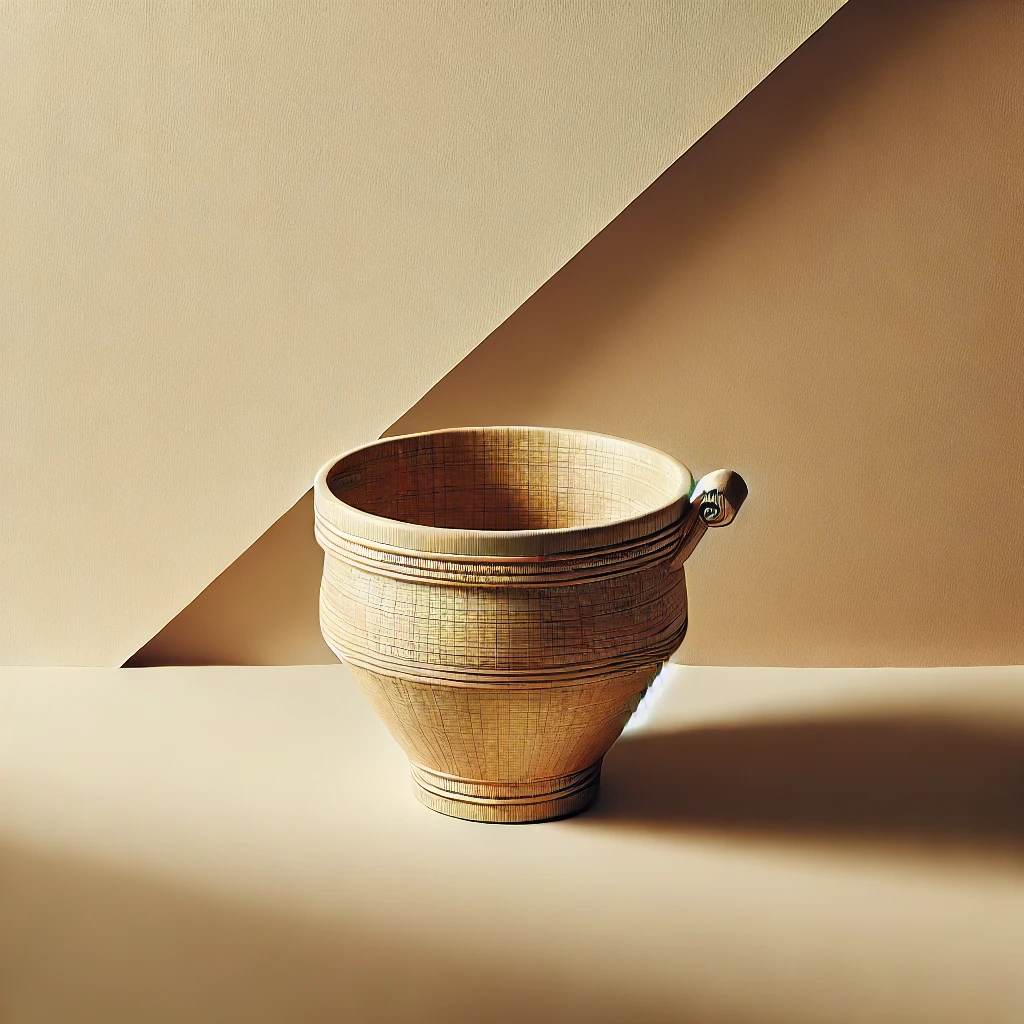The tabo, a humble plastic dipper found in countless households across Southeast Asia, is far more than just a simple container. This unassuming object carries with it a rich cultural heritage, practical functionality, and environmental implications that extend far beyond its modest appearance. In this comprehensive exploration, we will delve into the history, uses, and significance of the tabo, examining its role in daily life, personal hygiene, and cultural practices. From its origins in the Philippines to its adoption in neighboring countries, the tabo has become an integral part of many Southeast Asian cultures, reflecting the region’s unique approach to water conservation and personal cleanliness. As we uncover the multifaceted nature of this common household item, we will gain a deeper appreciation for its importance in both practical and cultural contexts.
History and Origins
Ancient Roots
The tabo’s history can be traced back centuries, with its origins deeply rooted in the cultural practices of the Philippines. Archaeological evidence suggests that early versions of the tabo existed in pre-colonial times, crafted from materials such as coconut shells, gourds, or bamboo. These natural containers were used for a variety of purposes, including personal hygiene, water storage, and even as measuring tools for dry goods. The transition from these natural materials to the modern plastic tabo we know today occurred gradually over time, influenced by technological advancements and changing societal needs.
Evolution and Spread
As trade and cultural exchange increased throughout Southeast Asia, the concept of the tabo spread to neighboring countries, adapting to local customs and preferences. In Indonesia, a similar tool called the gayung emerged, while in Thailand, the khantho serves a comparable purpose. Despite slight variations in design and naming conventions, the fundamental concept and usage remained consistent across the region. The widespread adoption of the tabo throughout Southeast Asia speaks to its practicality and the shared cultural values of water conservation and personal cleanliness that are prevalent in the area.
Design and Functionality
Physical Characteristics
The modern tabo is typically made of durable plastic, designed to withstand frequent use and exposure to water. Its most common form consists of a bowl-like container with a long handle, allowing for easy gripping and maneuvering. The capacity of a standard tabo ranges from 1 to 2 liters, making it suitable for various tasks while remaining lightweight and manageable. Some designs incorporate additional features such as pour spouts or graduated markings for more precise water measurement.
Ergonomics and Variations
The ergonomic design of the tabo has evolved over time to enhance its functionality and user comfort. The handle is often curved or angled to provide a secure grip, even when wet. Some modern versions feature textured surfaces or non-slip materials to further improve handling. While the basic shape remains consistent, there are variations in size, color, and decorative elements to suit different preferences and household aesthetics. These design considerations contribute to the tabo’s enduring popularity and widespread use across diverse demographic groups.
Cultural Significance
Ritual and Tradition
In many Southeast Asian cultures, the tabo holds a significant place in daily rituals and traditional practices. Its use extends beyond mere functionality, often carrying symbolic meaning in ceremonies and religious observances. For example, in some Filipino communities, the tabo is used in blessing rituals or as part of wedding ceremonies, symbolizing purity and the washing away of negative energies. The act of sharing water from a tabo can also be seen as a gesture of hospitality and communal bonding, reinforcing social ties within families and communities.
Generational Knowledge Transfer
The proper use and care of the tabo are often passed down through generations as part of cultural knowledge transfer. Parents and grandparents teach children how to use the tabo efficiently for various tasks, instilling values of water conservation and personal hygiene from an early age. This intergenerational transmission of knowledge helps to preserve cultural practices and reinforces the tabo’s role as more than just a utilitarian object, but as a tangible link to cultural heritage and identity.
Practical Applications
Personal Hygiene
The primary use of the tabo in many households is for personal hygiene, particularly in bathroom practices. It serves as an efficient tool for washing and rinsing, allowing users to control water flow precisely and conserve water in the process. The tabo is commonly used alongside squat toilets or as an alternative to toilet paper, providing a more thorough and hygienic cleaning method. Its versatility extends to other personal care routines, such as hand washing, face washing, and even hair rinsing during bathing.
Household Cleaning
Beyond personal hygiene, the tabo finds numerous applications in general household cleaning tasks. Its capacity and maneuverability make it useful for tasks such as:
- Watering plants
- Rinsing dishes
- Cleaning floors and surfaces
- Filling buckets or other containers
The tabo’s efficiency in these tasks contributes to its status as an indispensable household item in many Southeast Asian homes.
Environmental Impact
Water Conservation
One of the most significant environmental benefits of using a tabo is its contribution to water conservation. By allowing users to control the amount of water used for various tasks precisely, the tabo helps reduce overall water consumption in households. This is particularly important in regions where water scarcity is a concern or where plumbing infrastructure may be limited. The table below illustrates the potential water savings achieved by using a tabo compared to conventional methods:
| Task | Water Usage with Tabo (Liters) | Water Usage without Tabo (Liters) | Water Savings (%) |
|---|---|---|---|
| Toilet Flushing | 1-2 | 6-13 | 80-90% |
| Hand Washing | 0.5-1 | 2-5 | 75-80% |
| Face Washing | 0.5-1 | 3-7 | 80-85% |
| Plant Watering | Variable (as needed) | Often overwatered | Up to 50% |
Plastic Waste Considerations
While the tabo’s role in water conservation is commendable, its widespread use does raise concerns about plastic waste. Most modern tabos are made from durable plastics, which, while long-lasting, contribute to the global issue of plastic pollution if not disposed of properly. To address this concern, some manufacturers have begun exploring more sustainable materials for tabo production, such as biodegradable plastics or recycled materials. Additionally, the longevity of a well-made tabo means that a single item can remain in use for many years, potentially reducing overall plastic consumption compared to single-use alternatives.
Economic Aspects
Manufacturing and Distribution
The production of tabos has become a significant industry in several Southeast Asian countries, particularly in the Philippines, Indonesia, and Thailand. Local manufacturers range from small-scale artisanal producers to large plastic goods companies. The tabo’s ubiquity in households across the region ensures a steady demand, contributing to local economies and providing employment opportunities in manufacturing, distribution, and retail sectors.
Market Trends and Innovations
As consumer preferences evolve and environmental concerns grow, the tabo market has seen several innovations and trends emerge:
- Eco-friendly materials: Manufacturers are exploring sustainable alternatives to traditional plastics, such as bamboo fiber composites or recycled ocean plastics.
- Smart designs: Some companies are introducing tabos with improved ergonomics, multi-functional features, or collapsible designs for travel.
- Aesthetic appeal: Designer tabos with artistic patterns or luxurious materials are gaining popularity as decorative bathroom accessories.
- Global expansion: As awareness of the tabo’s benefits spreads, there is growing interest in international markets, particularly in eco-conscious communities.
Health and Hygiene Considerations
Sanitation Benefits
The use of a tabo for personal hygiene, particularly in conjunction with squat toilets, offers several sanitation benefits:
- Reduced risk of contamination compared to toilet paper use
- More thorough cleaning, potentially lowering the incidence of urinary tract infections
- Improved hand hygiene through the practice of washing after toilet use
- Decreased reliance on processed paper products, which can cause irritation for some individuals
Potential Risks and Precautions
While the tabo is generally considered a hygienic tool, proper care and usage are essential to prevent potential health risks:
- Regular cleaning: Tabos should be washed and dried regularly to prevent bacterial growth.
- Personal use: In shared bathrooms, individuals should have their own tabos to avoid cross-contamination.
- Water quality: In areas with questionable water quality, it’s important to use clean, potable water in the tabo for personal hygiene.
- Proper technique: Users should be educated on the correct way to use a tabo to ensure effective cleaning without splashing or contamination.
Global Perspectives and Adoption
Cultural Exchange and Adaptation
As global travel and cultural exchange have increased, awareness of the tabo and its benefits has spread beyond Southeast Asia. Travelers exposed to tabo use in the region have sometimes adopted the practice in their home countries, leading to a gradual increase in global recognition. This cross-cultural adoption has sparked discussions about personal hygiene practices and water conservation methods in various parts of the world.
Challenges to Widespread Adoption
Despite its benefits, the tabo faces several challenges to widespread adoption in Western countries:
- Existing bathroom infrastructure not designed for tabo use
- Cultural resistance to changing established hygiene practices
- Lack of familiarity with proper tabo techniques
- Perception of the tabo as a “low-tech” solution in high-tech societies
To address these challenges, education and awareness campaigns are crucial in highlighting the tabo’s benefits and demonstrating its compatibility with modern lifestyles.
Future Prospects
Technological Integration
As smart home technology advances, there is potential for the tabo to evolve and integrate with modern bathroom fixtures. Concepts under exploration include:
- Smart tabos with water usage tracking capabilities
- Integration with smart toilet systems for optimized water dispensing
- Automated cleaning and sanitization features
Sustainability Initiatives
The future of the tabo is likely to be closely tied to sustainability efforts. Potential developments include:
- Widespread adoption of biodegradable or compostable materials in tabo production
- Integration of tabo use in water conservation education programs
- Collaboration between tabo manufacturers and environmental organizations to promote responsible water use
Conclusion
The tabo, a simple yet ingenious household item, embodies the intersection of cultural tradition, practical functionality, and environmental consciousness. Its significance extends far beyond its humble appearance, reflecting the values and practices of Southeast Asian cultures while offering valuable lessons in resource conservation and personal hygiene. As global awareness of water scarcity and sustainable living practices grows, the tabo stands as a testament to the enduring wisdom found in traditional solutions to everyday challenges.
By embracing the tabo and understanding its multifaceted role in society, we gain not only a useful tool for daily life but also a deeper appreciation for cultural diversity and the importance of adapting our practices to live in harmony with our environment. As we look to the future, the tabo’s journey from a simple dipper to a symbol of sustainable living and cultural heritage serves as an inspiring example of how traditional knowledge can inform and enhance our approach to modern challenges.
Whether viewed as a cultural artifact, a water-saving device, or a practical hygiene tool, the tabo continues to play a vital role in millions of households across Southeast Asia and beyond. Its enduring presence in homes and its gradual adoption in other parts of the world underscore the universal appeal of simple, effective solutions to everyday needs. As we continue to grapple with global issues of resource management and cultural understanding, the humble tabo reminds us that sometimes, the most profound insights can come from the most unassuming sources.
Disclaimer: This article aims to provide accurate and up-to-date information on the tabo and its cultural significance. However, practices and perceptions may vary across different regions and communities. Readers are encouraged to consider their local context and consult appropriate sources for specific guidance on hygiene practices. If you notice any inaccuracies in this article, please report them so we can correct them promptly.




